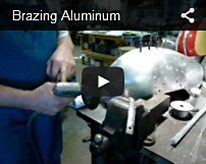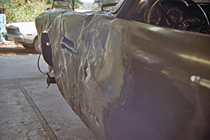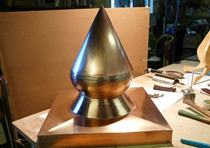Selecting the Right File
Here are a few elements to consider when choosing a file.
Shape: Files come in hundreds of shapes and sizes including flat, rounds, half-rounds, triangular, square, blunt, tapered, and more. For sheet metal you will most frequently reach for a flat or half-round file. The half-rounds are handy because the flat face can be used for filing flat surfaces, and the curved face can be used for concave surfaces or grooves. Files are primarily of two
types: those with a pointed end that fits into a handle (tang), and flat files with holes in each end for bolting to a holder.
Coarseness: is determined by the number of teeth per inch (the less teeth the more coarse the file), while âcut grade” is determined by the character of the teeth â whether they are Rough, Medium, or Fine cut (aka Bastard, Second, Smooth). Rougher surfaces need coarser patterns, and smoother surfaces finer tooth patterns, so choose according to what surface you are working and the amount of metal you need to remove.
Size: When choosing a file, keep in mind that the longer the file, the coarser the cut (and subsequently the rougher the finish). This is because as the length of the file increases the number of teeth per inch goes down. (A 10" file has 23 teeth per inch, whereas a 4" file of the same cut has 43 teeth per inch. This is so you get the same force input on a short file as you do on a long one). You may need to use several files, getting smaller in size and/or finer in grade, as you go from rough to fine finish.
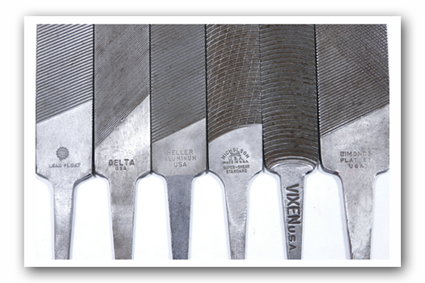
Specialty Files: There are files for specific applications and difficult metals, including knifemaking, stainless steel, bronze, jewelry, instrument making, etc. Call or see our website to get a chart of recommended files for various metals and jobs.
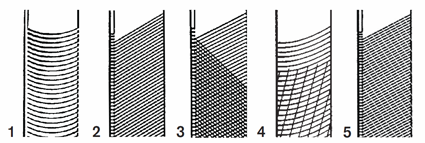
1. Vixen (curved-cut) files have teeth in curved contoured rows across the file face. They are considered the best file ever designed for autobody repair and are used for smoothing panels.
2. & 3. Single-cut files have single diagonal (parallel) rows of teeth. They are used with light pressure to produce a smooth finish or to put an edge on knives, shears, or saws. Double-cut files are used with heavier pressure to remove metal faster. They have two diagonal rows of teeth cut at different or opposite angles. Generally the âupcut” (top row of teeth) is a finer cut.
4. & 5. Shear / Serrated-cut files have single cut teeth divided by steep angled serrations, which free themselves readily from chips (some perform roughing and smoothing simultaneously).
